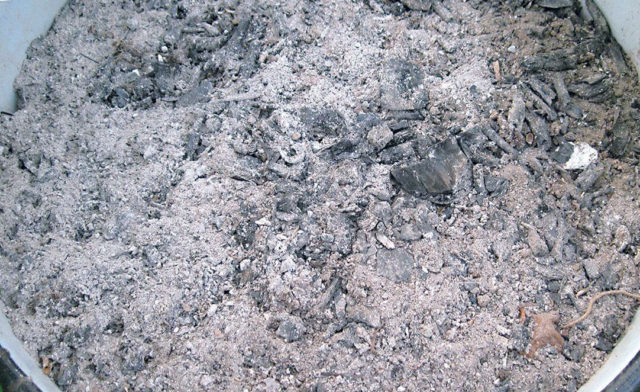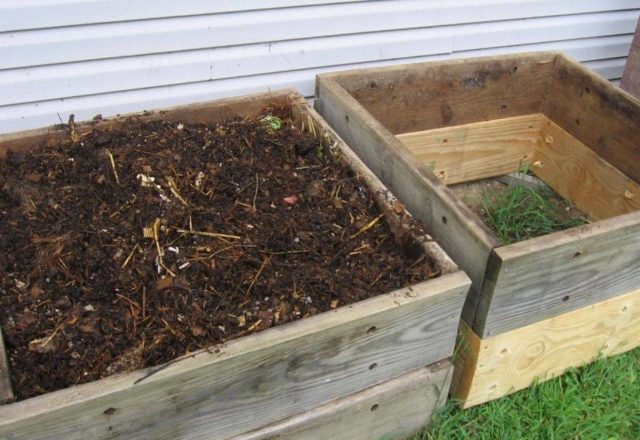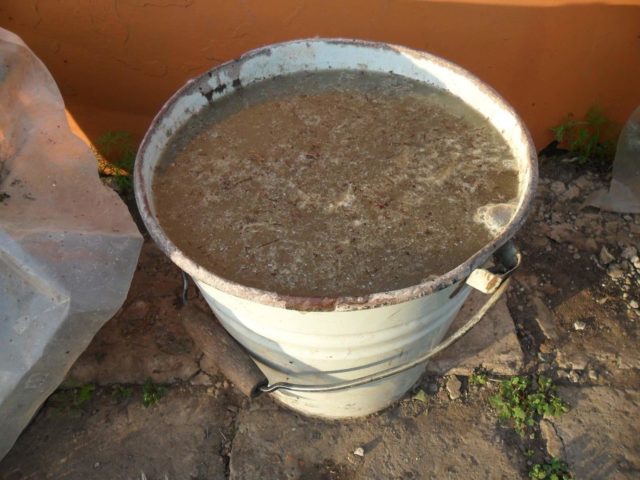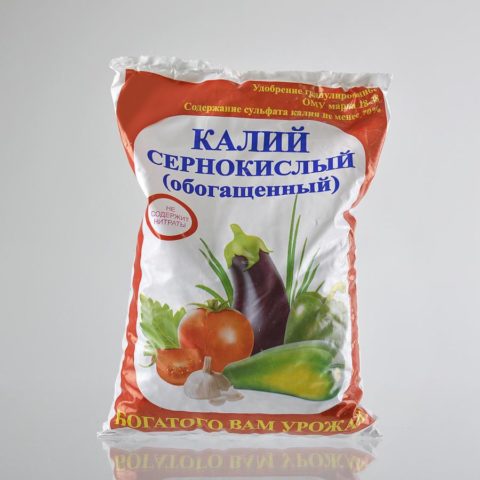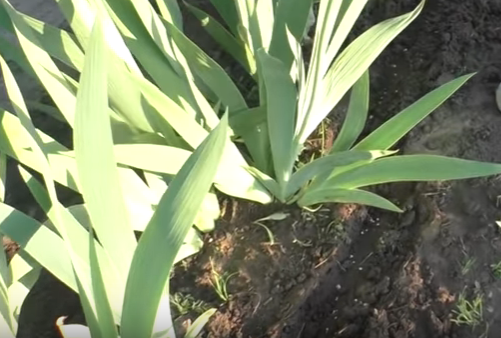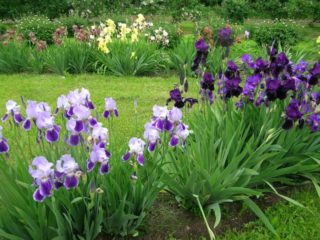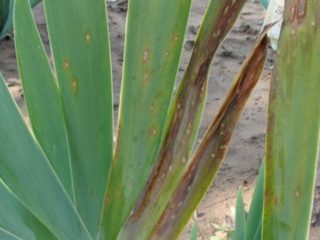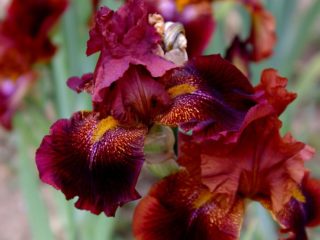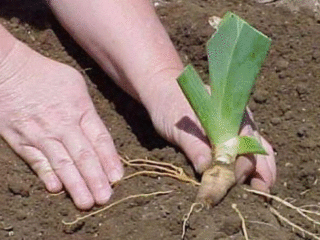Content
Irises are perennial rhizome ornamental plants. There are more than 800 varieties in the family, distributed across all continents. The culture needs care and periodic feeding, which must be performed taking into account the time of year, the region of cultivation and a number of specific features. Top dressing of irises in spring ensures rapid vegetative growth and abundant flowering without delay.
Types of dressings for irises
Both mineral and organic complexes are used to feed iris in spring and summer. The plant needs the following fertilizers:
- Wood ash. It is an excellent source of phosphorus and potassium, as well as a full range of trace elements that support the plant's immunity. Soil microorganisms feed on wood ash, which improve the quality of the soil.
- Compost. Source of humus and nutrients. The loose consistency of humus improves the air permeability of the soil.
- Humus. Introduce in liquid form (no more than two shovels per bucket of water). If the root system was damaged during the introduction of humus, it is necessary to treat these areas with dry ash or a solution of potassium permanganate.
- Bone flour. It takes time to completely dissolve, so it is recommended to fill it with hot water and wait until it cools completely. After pouring the solution into the soil, bacteria begin to gradually process organic residues.
- Potassium sulfate. Used to support peduncles.
- Sulfur necessary for full cell metabolism and increasing resistance to fungal infections and pathogens of various diseases.
- Ammonium sulfate used to acidify the soil. It is used in areas with neutral and alkaline soil. In acidic soil, in addition to ammonium sulfate, you need to add a little ground chalk.
Terms of feeding irises in spring, summer and autumn
Caring for most varieties involves the following timing of top dressing:
- the first procedure is carried out after the snow cover has completely melted. In some regions, the snow melts at the end of February - early March, in others - only by mid-April;
- the second feeding is done during the active formation of buds, the third - in the summer, when the plants are preparing for wintering.
How to feed irises
You need to select fertilizers based on the season, soil type and other factors. For feeding irises in the spring in the country, mineral mixtures are used, since they have a higher absorption rate than organic ones. In the case of using organic fertilizers in early spring, the soil is prepared by sprinkling with a urea solution. It is not only rich in nitrogen, but also prevents the reproduction of pests.
How to feed irises in spring after winter
Fertilizing irises after winter is based on nitrogen fertilizers, which are necessary in spring for the active formation of green mass. The plant needs magnesium to saturate the cells with chlorophyll. Irises also require the following fertilizers in early spring:
- potassium or ammonium nitrate;
- compost;
- balanced mineral complexes.
Fertilizers with a predominance of nitrogen are applied at the rate of 1 tbsp. l. for each plant. To improve digestibility, top dressing is diluted in slightly warmed water and gently watered with the resulting solution around the irises. Sandy soils are very poor at retaining nitrogen. It settles in the lower soil layer, from where the iris roots are unable to extract it.
How to feed irises in spring for abundant flowering
In May, active formation of buds takes place, therefore, in late spring, before flowering, irises need potassium-phosphorus fertilizers, which provide the plant with energy and necessary substances. Bone meal and double superphosphates obtained from industrial processing are considered to be good sources of phosphorus. They are distinguished by worse solubility than nitrogen fertilizing, therefore they are introduced into grooves of shallow depth.
For lush flowering in the garden, you need to feed the irises in spring with potash fertilizer. You can start feeding after the first buds have formed. The ratio of potassium to phosphorus in the fertilizer should be approximately 1: 3. For the next top dressing, which is performed a month later, fertilizers with phosphorus and potassium in equal proportions are needed. Superphosphates increase the acidity of the soil, so they can only be used on sandy loam with low pH.

You can improve the decorative qualities of iris by removing wilted flowers, followed by cutting off the peduncle near the base.
Slices should be sprinkled with a small amount of crushed coal.
Top dressing of irises in summer
Top dressing in the summer directly during the flowering period is not practiced. Fertilization may only be required if the iris is growing on poor soil. Signs of a lack of nutrients in the soil are an unnatural shade of foliage, as well as insufficiently opened buds and a lack of lush flowering. The last feeding is performed at the end of August - after the end of flowering. Fertilizers with a predominance of potassium and phosphorus are used, which are necessary for normal wintering.
When flowering ends, a period of calm begins, characterized by a sharp slowdown in growth. After a few weeks, secondary vegetative growth begins, accompanied by intense root formation, budding and formation of buds, and the formation of new shoots. During this period, irises are in dire need of phosphorus fertilization. For each square meter, 22-30 g of potassium salts and 55-60 g of superphosphates are added.
How to fertilize irises in autumn
Autumn feeding is not practiced, since the plant has time to stock up on the necessary nutrients for the spring and summer. If you feed the irises in the fall, then with the onset of winter, the condition of the flowers can only worsen. In the case of an excess of nitrogen introduced during the end of the growing season, the plants suffer from fat content and are distinguished by a delayed onset of flowering.
How to properly feed irises
If the irises have not been covered for the winter, fertilizer granules are scattered over the snow cover before it melts. Top dressing in dry soil is not practiced as this can burn the root system. The compost is spread directly under the foliage in a thin layer. For even distribution of nutrients, irises are watered. Wood ash is a good top dressing for irises to bloom in spring. Three tablespoons of ash per bush is enough to significantly reduce the likelihood of diseases and stabilize the acidity of the soil.
Professional advice
There is an opinion among flower growers that manure is the best fertilizer for most ornamental crops. However, it is absolutely not suitable for irises, since it can greatly inhibit growth and provoke rotting of the root system. After fertilization with manure, irises get sick, dry and throw off the foliage, and flowering becomes short and rare. Such feeding attracts various pests, therefore it is not recommended to use it.Experienced gardeners give the following tips for fertilizing irises:
- Use organic substances with great care, diluting them with water in a ratio of 1:20.
- It is preferable to apply dry dressing, ensuring the flowers are thoroughly watered.
- When feeding with compost from foliage, scatter it around the roots, followed by loosening the soil.
If flowering is delayed, but there is abundant growth of green mass, the problem may be in the excessive acidification of the garden area. In this case, it is necessary in the spring, even before flowering, to feed the irises with phosphate rock, which will increase the pH of the soil to an optimal state.
Conclusion
Feeding irises in spring is a process that requires knowledge and utmost care. Do not overfeed the plant with fertilizers and mineral supplements. It is best to add them gradually, starting at a low concentration.
